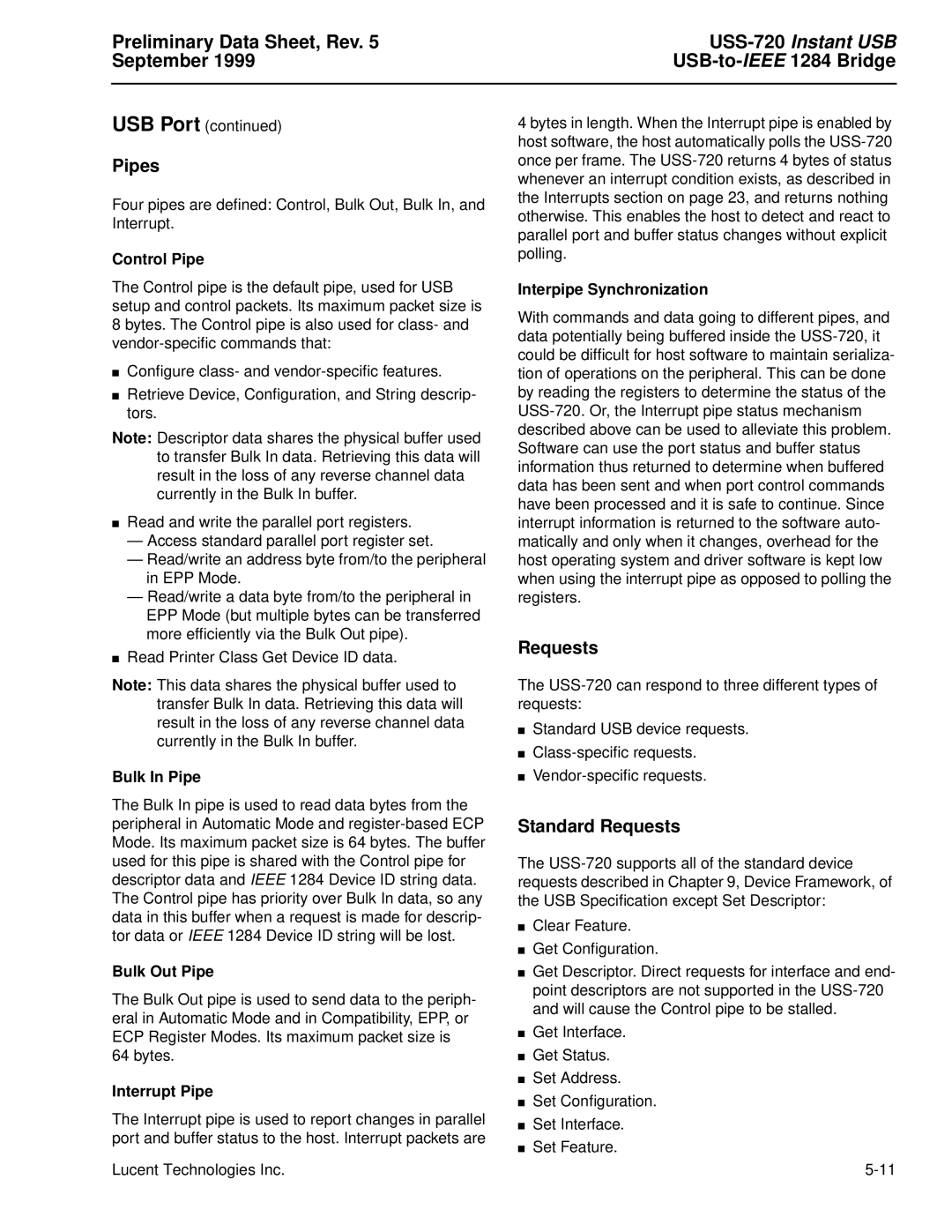Preliminary Data Sheet, Rev. 5 |
| Instant USB |
September 1999 |
| 1284 Bridge |
|
|
|
USB Port (continued)
Pipes
Four pipes are defined: Control, Bulk Out, Bulk In, and Interrupt.
Control Pipe
The Control pipe is the default pipe, used for USB setup and control packets. Its maximum packet size is 8 bytes. The Control pipe is also used for class- and
■Configure class- and
■Retrieve Device, Configuration, and String descrip- tors.
Note: Descriptor data shares the physical buffer used to transfer Bulk In data. Retrieving this data will result in the loss of any reverse channel data currently in the Bulk In buffer.
■Read and write the parallel port registers.
—Access standard parallel port register set.
—Read/write an address byte from/to the peripheral in EPP Mode.
—Read/write a data byte from/to the peripheral in EPP Mode (but multiple bytes can be transferred more efficiently via the Bulk Out pipe).
■Read Printer Class Get Device ID data.
Note: This data shares the physical buffer used to transfer Bulk In data. Retrieving this data will result in the loss of any reverse channel data currently in the Bulk In buffer.
Bulk In Pipe
The Bulk In pipe is used to read data bytes from the peripheral in Automatic Mode and
Bulk Out Pipe
The Bulk Out pipe is used to send data to the periph- eral in Automatic Mode and in Compatibility, EPP, or ECP Register Modes. Its maximum packet size is 64 bytes.
Interrupt Pipe
The Interrupt pipe is used to report changes in parallel port and buffer status to the host. Interrupt packets are
Lucent Technologies Inc.
4 bytes in length. When the Interrupt pipe is enabled by host software, the host automatically polls the
Interpipe Synchronization
With commands and data going to different pipes, and data potentially being buffered inside the
Requests
The
■Standard USB device requests.
■
■
Standard Requests
The
■Clear Feature.
■Get Configuration.
■Get Descriptor. Direct requests for interface and end- point descriptors are not supported in the
■Get Interface.
■Get Status.
■Set Address.
■Set Configuration.
■Set Interface.
■Set Feature.
